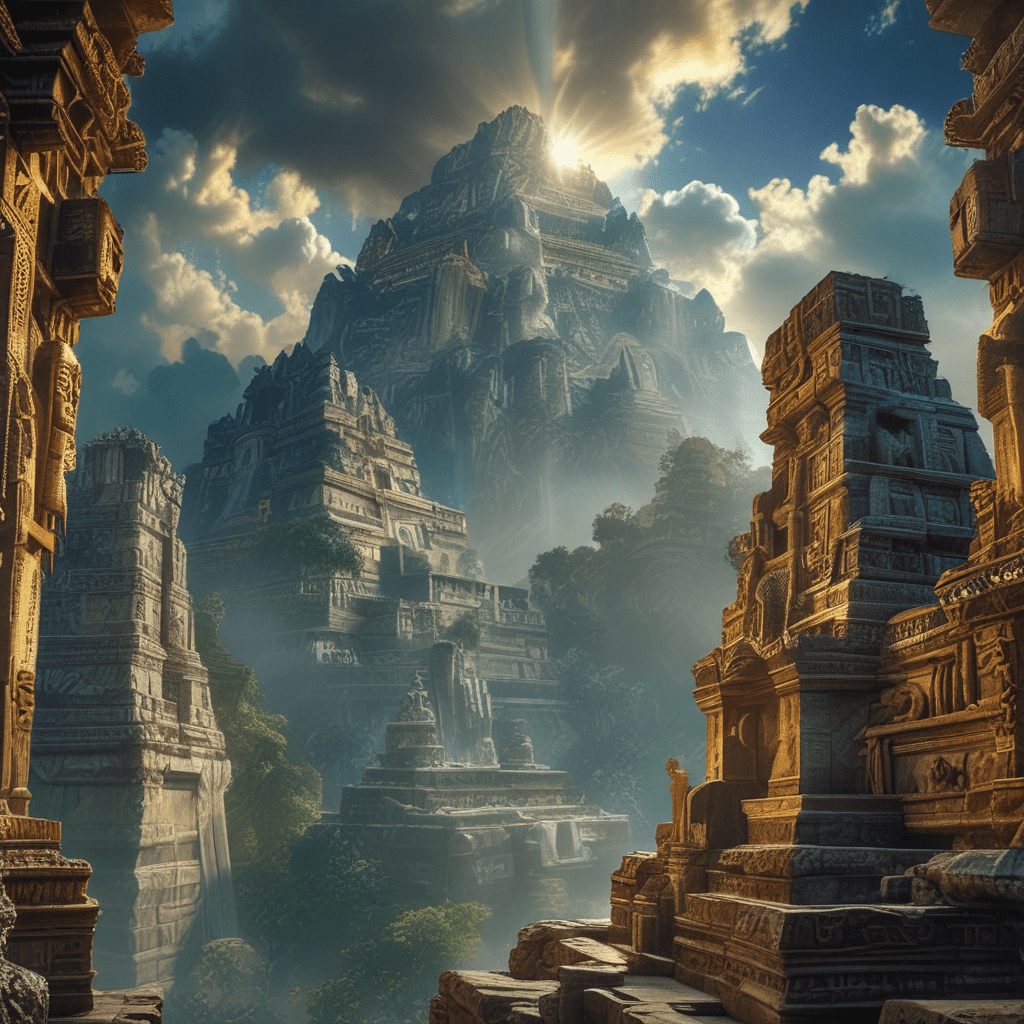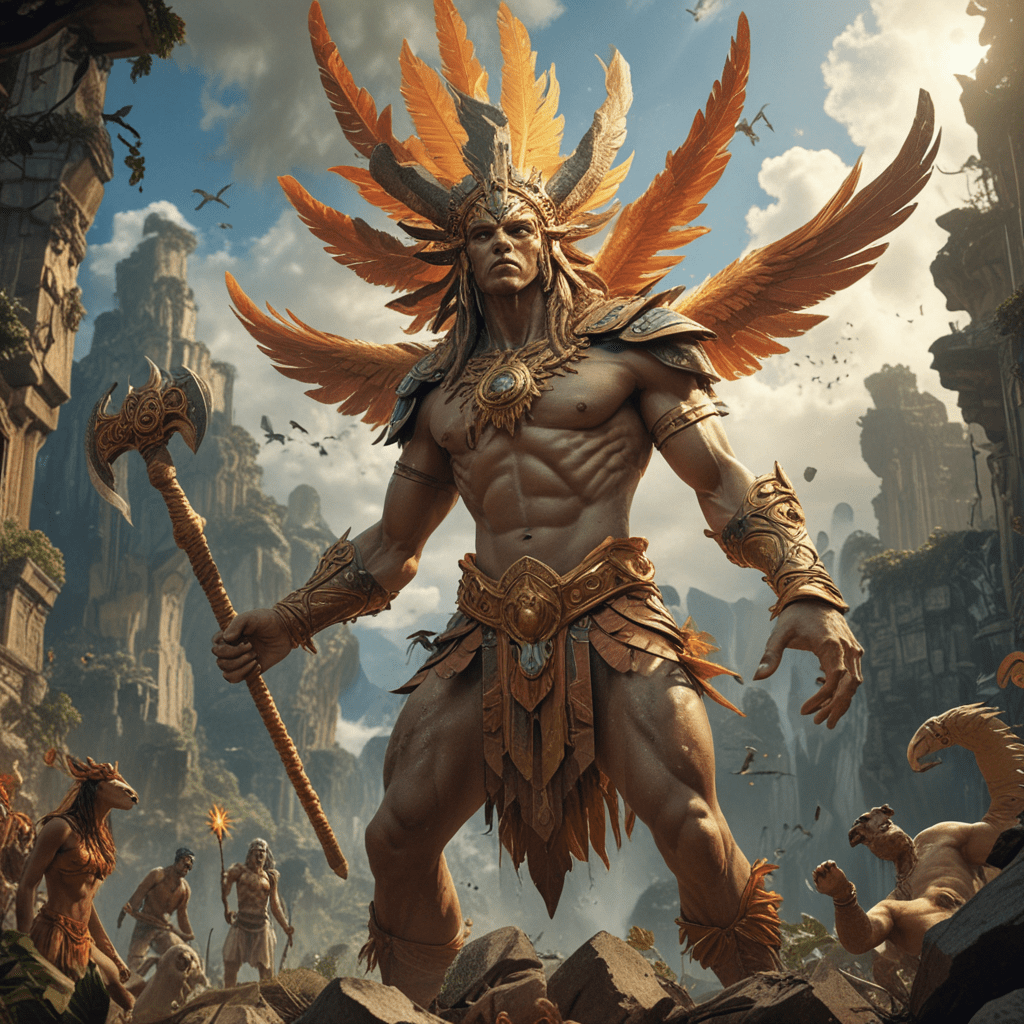From Olympus to Avalon: The Most Enigmatic Sacred Sites in Mythology
1. Introduction: The Significance of Sacred Sites in Mythology
Sacred sites have long held a prominent place in the tapestry of human mythology. These locations are imbued with spiritual significance, serving as the backdrop for mythic narratives that explore the relationship between the divine and the mortal. Across various cultures, these sites are depicted as places where gods, ancestors, and spiritual beings interact with humanity, offering guidance, wisdom, and sometimes, judgment.
From the towering peaks of sacred mountains to the mysterious depths of the underworld, these locations shape cultural identities and inform spiritual practices. They symbolize the human quest for understanding life’s mysteries, offering a physical manifestation of the metaphysical world.
2. Mount Olympus: The Home of the Greek Gods
In Greek mythology, Mount Olympus stands as the majestic abode of the gods, a symbol of divine power and authority. Towering above the clouds, it is often described as a paradise where deities such as Zeus, Hera, and Athena reside, ruling over humanity and the natural world.
Key myths associated with Olympus include:
- The Titanomachy, where the Olympian gods defeated the Titans.
- The contest between Athena and Poseidon for the patronage of Athens.
- The tales of mortal heroes seeking the favor of the gods, like Heracles and his twelve labors.
The cultural impact of Mount Olympus in ancient Greece was profound. It served as a metaphor for the ideals of beauty, strength, and the pursuit of excellence, influencing art, literature, and philosophy. Temples dedicated to various gods dotted the landscape, serving as centers of worship and community gatherings.
3. Avalon: The Enchanted Isle of Arthurian Legend
Avalon is steeped in mystery within Arthurian legends, often depicted as a mystical isle where the great King Arthur was taken after his final battle. This enchanted land is characterized by themes of death, rebirth, and magic, representing a liminal space between life and the afterlife.
The connection of Avalon to death and rebirth is significant, as it symbolizes the cyclical nature of existence. It is said that the island is home to the Lady of the Lake and is associated with the magical sword Excalibur.
In contemporary interpretations, Avalon has become a symbol of hope and healing, often associated with the feminist revival of ancient myths. It serves as a reminder of the power of nature and the feminine divine, inspiring literature, art, and spiritual practices today.
4. The Underworld: Mythical Realms of the Dead
The concept of an underworld exists in many mythologies, each with its unique characteristics and symbolism. Notable examples include:
- Hades in Greek mythology, ruled by the god of the same name, where souls journey after death.
- Hel in Norse mythology, a realm for those who did not die in battle.
- Duat in Egyptian mythology, a complex underworld where the soul undergoes judgment.
The symbolism of the underworld often reflects the beliefs surrounding life, death, and the afterlife. It serves as a reminder of mortality and the spiritual journey that follows. These realms have profoundly impacted cultural views of death, shaping traditions surrounding funerals and memorials.
5. The Sacred Grove: Nature as a Mythical Sanctuary
Sacred groves are revered spaces found in various cultures, often associated with rituals and spiritual practices. For example:
- The Druids in ancient Celtic cultures revered groves as places of worship and connection to the divine.
- The Ancient Greeks held sacred groves dedicated to gods such as Apollo and Artemis.
The relationship between nature and spirituality is central to the concept of sacred groves. These natural sanctuaries often symbolize the belief that the divine can be found in the beauty of the natural world. In modern interpretations, these sites continue to inspire ecological spirituality and environmental conservation efforts.
6. The Labyrinth: Symbolism and Sacred Journey
The labyrinth is a powerful symbol found in various mythologies, most famously in the Greek myth of the Minotaur, wherein the labyrinth was designed to contain the beast. It represents the complex journey of life, filled with challenges and choices.
The labyrinth serves as a metaphor for:
- The trials one faces in life.
- The spiritual quest for self-discovery and enlightenment.
Modern spiritual practices often incorporate labyrinths as tools for meditation and reflection, inviting individuals to walk the path as a means of exploring their inner landscape.
7. The City of Atlantis: Mythical Civilization and Its Sacred Places
The myth of Atlantis, first described by Plato, presents a civilization of advanced knowledge and spirituality, believed to have been located beyond the pillars of Hercules. The story of its sudden disappearance serves as a cautionary tale about hubris and moral decay.
Theories about the location and significance of Atlantis abound, with some suggesting it was a real place while others view it as purely allegorical. Regardless, Atlantis has left a lasting cultural legacy, inspiring countless explorations and searches for its lost lands.
8. Stonehenge and Other Megalithic Sites: Rituals and Mysteries
Stonehenge, one of the most famous megalithic sites, is surrounded by mystery and speculation regarding its purpose and significance in ancient societies. Its alignment with the solstices suggests a connection to astronomical events, possibly serving as a temple or ceremonial site.
The role of megalithic structures in sacred practices often reflects the community’s relationship with the cosmos and the divine. Theories surrounding their purpose include:
- Rituals related to agricultural cycles.
- Burial practices and ancestor worship.
- Celestial observations and navigation.
9. The Sacred Mountains: Peaks of Divine Connection
Sacred mountains are revered across cultures, often seen as the dwelling places of gods or as sites of divine revelation. Examples include:
- Mount Sinai, where Moses received the Ten Commandments.
- Mount Fuji, considered sacred in Shinto beliefs.
These mountains symbolize elevation and proximity to the divine, representing the aspiration of humanity to connect with a higher power. Pilgrimages to these sites continue to be an important aspect of spiritual practice for many cultures.
10. Conclusion:
The exploration of sacred sites in mythology reveals the deep connections between humanity and the divine. From Mount Olympus to Avalon, these locations embody the spiritual quests of cultures throughout history. They remind us of our perpetual search for meaning, connection, and understanding in a world filled with mystery and wonder. As we continue to navigate our spiritual journeys, these sacred sites serve as enduring symbols of the transcendent experiences that shape our lives.




